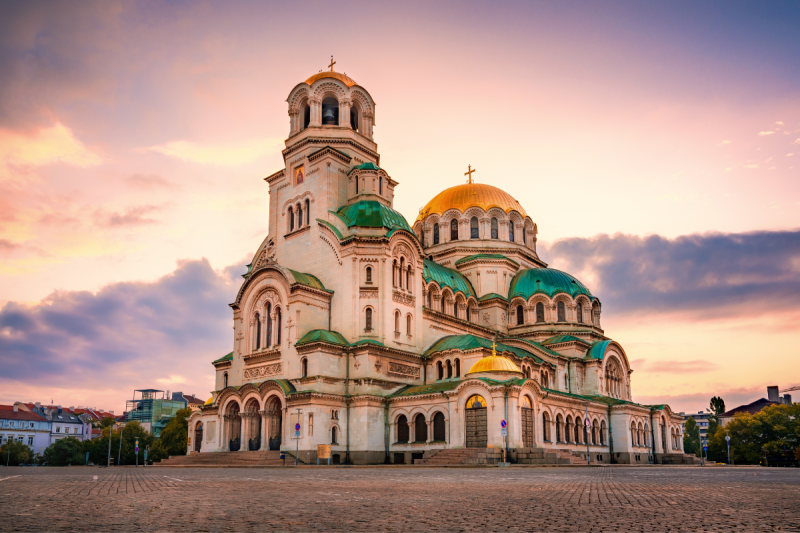Welcome to the Croatia Regional Travel Guide from Our Big Escape. In this guide, we will break down each of the main cities and the 9 regions of Croatia. We hope to give you a better understanding of Croatia and its history as well as timely travel information
The Croatia Regional Travel Guide – Zagreb And Area
Zagreb, the capital of Croatia, is a surprisingly pleasant getaway located in Central Europe. This previously unknown city has faced a lot of stereotypes, as its culture can be described as a cross between the urban, gritty attitudes that is mainly present in Northern Europe, and the very relaxed and casual atmosphere of the Mediterranean south.
Despite this reputation, it has always been known as a very creative, quirky place to visit, particularly when compared to the cities and towns on the coast of Croatia, that are especially known for their tourist spots. Before now, most tourists were more interested in exploring the Adriatic, yet are now finding more interest in other locations, namely Zagreb. It was not until now that they realized that Zagreb was the birthplace of a lot of creativity in regards to alternative music, bars, and fashion/clothing.
Due to this sudden interest in Zagreb and its culture, it is experiencing somewhat of a boom, with more restaurants and creative city-wide activities taking place more frequently, such as festivals. Due to its unique sense of style and creativity, there is a noticeable lack of international franchises that operate out of the city, but more of an emphasis on smaller, locally owned cafes and restaurants. If one wants to visit a wholly unique city, that follows the beat to its own drum, its own path in life, then come visit Zagreb, one of the most authentic Central European cities left in the world.
Zagreb has been the capital of Independent Croatia since 1991, so it is a relatively new capital city. However, it has been at the center of a political and cultural focus of the area since the Middle Ages. Zagreb sprung up from two middle-age towns, Kaptol (east) and Gradec (west)–and the two came together, as they were separated by a river (that has since dried up) and each was located on a hill. In the nineteenth century, the town began to grow relatively quickly, and due to this, many of the buildings that were erected during the time that they were under the rule of the Austro-Hungarian Empire still stand, well preserved.
Zagreb boasts of a population of nearly a million people and is well known for its turbulent, boisterous population and nation. If you visit here, not only does the nightlife ensure that you will be entertained no matter your tastes, but the museums and other activities will ensure no time you spend will ever be wasted.
However, if you want to visit at the highest, most exciting times of the city, do not visit in August–that is when a large majority of the locals go to the coast and enjoy a month-long siesta.
History of Zagreb
As we promised the Croatia Regional Travel Guide will take you through the history of this unique country beginning here in Zagreb. Despite the fact that there were Iron Age settlements in Gradec, Zagreb doesn’t really come into its own as a city until 1094. This is when Ladislas I of Hungary decided to buckle down on Croatia and bring it further into the fold of his empire, and established bishopric.
Through this decision, a large ecclesiastical community grew through the building of the cathedral and the other episcopal buildings, which were located on Kaptol (this then translates as “cathedral chapter”). On the opposite hill, (Gradec) the Hungarian Empire placed a garrison. When the Mongol incursions began in 1240 and lasted around two years, King Bela IV designated Gradec as a “royal free town”, in an attempt to get people to settle there and create urban life.
Unfortunately, the towns of Kaptol and Gradec did not get along–they each wanted control of the watermills that were built on the very same river that divided their communities. There was always conflict and enmity regarding the windmills, but the worst of it occurred in 1527, which ended in the Habsburgs sacking the town of Kaptol. After this, the Habsburgs, who now controlled Croatia, began to slowly meld the two communities, which culminated in the creation of the town of Zagreb–which means “behind the hill”, a reference to the location of the newly formed town at the bottom of Mount Medvednica. The name of Zagreb soon became a name for both towns, as it slowly melded into one.
Habsburg Rule
The Ottoman Empire controlled the majority of Croatia at the end of the sixteenth century, and it was reduced to its northern conclave, with the town of Zagreb at the center. There was a Croatian Parliament, which hosted regular sessions, but this was a largely ceremonial government. However, within the Habsburg Empire, Zagreb was a provincial outpost, and eventually, their language was deposed with German, Latin, and Hungarian. It was not until the Croatian national consciousness began to grow in the mid-nineteenth century, that Zagreb’s status as the birthplace and center of the nation’s culture was confirmed.
An academy of arts and sciences was established in 1866, along with a national theater in 1890, a university in 1874, which strengthened the city’s cultural identity. Ironically enough, it was a German-born architect, Hermann Bolte (1845-1926) who shaped much of the city’s cultural and visual identity, with his creation of the School of Arts and Crafts, the Zagreb Cathedral, and the Mirogoj Cemetery.
Yugoslavia, To the Present
Yugoslavia was created in 1918, and with that, the political power went from Vienna to Belgrade–a city that was considered to be little more than a backwater to most Croats. After World War II, things improved somewhat, as Croatia was now considered to be a socialist republic, and Zagreb was at the center of its government. While no longer a country or a factor in the country we at the Croatia Regional Travel Guide still believe it to be knowledge you may want to know when you plan your trip.
Architectural changes came into play in the 1950s and 1960s, when the mayor, Veceslav Holjevac, was a major force behind the southward expansion of the city, which created the residential complexes in Novi Zagreb. Once Yugoslavia collapsed, the city was somewhat affected by it but did not suffer too much, even though they were subject to rocket attacks by the Serbians.
Many Croatian cities have suffered from a slump-boom-slump cycle, but Zagreb has fared better than their counterparts in this. Because of this, not only is it considered to be the cultural capital of Croatia, but also its economic capital.
| GOVERNMENT LINKS |
| General Information VISAS Tourism |
The Croatia Regional Travel Guide – Inland Croatia
There is a wide variety of inland regions that make up Croatia and the Croatia Regional Travel Guide will begin here with the inland areas of Croatia. When you look at them, they don’t seem to have much in common with each other. However, the inland regions of Croatia have been united for several centuries with a unique set of cultural influences that are just not present in the coastal regions.
When the medieval kingdom of Croatia collapsed in the twelfth century, the inland regions of Croatia were taken over first by Hungary, then by the Habsburg Empire, which caused it to continually adapt its culture and us the architectural prowess gained from the rest of Central Europe.
This unique heritage has left its mark on modern Croatia–with its farmhouses painted in pastels along the countryside, the Gothic spires and onion domes on the churches, quite different from the Venetian campaniles on the churches of the coast.
However, Inland Croatia has always been very desirable and appealing due to its contrasting landscapes. They contain mountain chains, from the Alps to the Adriatic, as well as Pannonian plains that go from Zagreb to eastern Hungary.
North of Zagreb, the Zagorje region, reminds most travelers of southern Austria, as it contains castles and knobby hills, and southwest of Zagreb there are several lakes and waterfalls that all empty into the Plitvice Lakes. The Lonjsko polje Nature Park, wetlands that are located southeast of Zagreb is not quite as popular for tourists as the other locations, but are equally interesting and gorgeous.
Slavonia, in its eastern province, also contains flat farmland that is broken up by the low green hills. In the northeast corner of this same province is the Kopacki rit Nature Park, known for its reedy waterways, sunken forests, and active wildlife.
These areas are becoming increasingly popular, as natural beauty is “in” with tourists–village bed and breakfasts, cycling routes, and restaurants are becoming more and more popular with tourists in Kopacki rit, Plitvice, Zagorje, and Lonjsko polje. Wine cellars and vineyards are becoming more and more popular with tourists, especially in the far southeast, in Ilok.
Urban centers have also survived throughout the centuries. Starting from the Habsburg rule, there have been several urban centers, located in preserved Baroque towns that have come under modern-day use. The most infamous and gorgeous of these are located in Varazdin (located northeast of Zagreb) and Osijek (located in eastern Slavonia, a fortress town).
Museums located in Vukovar, with a thriving wine industry in Ilok, will give you some of the best reasons to visit the southeast of Croatia. Not only this, but concerts, arts, venues, and many other interesting inducements in that region.
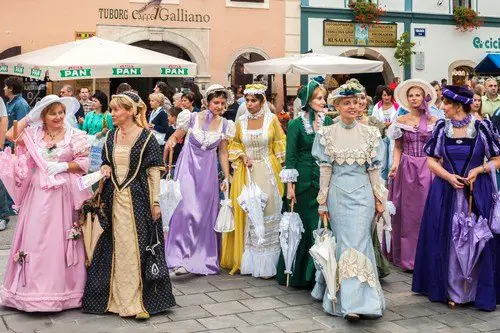
The Croatia Regional Travel Guide – Istria
Now for the coastal areas which are the areas most tourists visit. We will start here in the Croatia Regional Travel Guide and move from North to South beginning with Istria. Istria, located in the northern Adriatic is a very large, triangular peninsula. This is where tourism in Croatia is the most diverse and developed.
Its proximity to Western Europe has all but guaranteed that tourists from Germany, Austria, Italy, and almost the whole of Slovenia will visit annually and take up all of its hotel and coastline areas. The beaches on Istria are very rocky and have been made up over with concrete to allow sunbathers to sunbathe on level ground, so it is mainly the hotels and the campsites that make up most of the charm of an Istrian vacation.
Most of the homes on the coast are compact and have been built to group around the churches. However, when you go inland, the communities have a rare sort of beauty, as they still retain their medieval hilltop settlements and their villages built of stone.
Their culture is very complex, as they were mainly influenced by Italy on the coastal areas, but were fully Croatian in the inland areas. Italians were expelled after World War II, but despite this, there is still a thriving Italian community, and Italy is the peninsula’s second language.
The largest city in Istria is called Pula, and it is a port city. It contains several Roman relics, like the amphitheater, and this is a perfect place for tourists to set down camp and from which they should explore.
Go to the western side of Istria, and visit Rovinj and Novigrad–explore their shuttered homes, back alleys full of laundry, and cobbled piazzas. Between these two cities, Porec is a package destination town, with Mediterranean charm if you are into that sort of thing. As you go further inland, you will see how different it is. Visit historic hilltop towns such as Motovun, Opralj, Hum, and Groznjan.
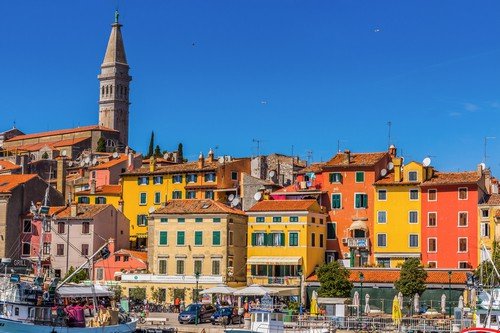
The Croatia Regional Travel Guide – Kvarner Gulf
The Kvarner Gulf, located between Istria in the north and Dalmatia in the south, puts together several of the most interesting features of Croatia in a single package–the fishing villages covered in subtropical plants, coastal mountains and hills, and the ochre-grey islands. Not only that but its beaches rival any Caribbean destinations you could think of taking, as they not only offer you sandy beaches but also rocky coves to explore to your heart’s content on the Adriatic.
The largest port in Croatia, Rijeka, is one of the most cultured cities you could ever visit as a tourist and has an added bonus of being the pathway to the rest of the southern part of Croatia. Krk is the most popular and accessible of these islands, as it is located only half an hour from Rijeka and is still connected to the mainland via a bridge.
Other islands–Cres, Losinj, and Rab–are further out and you would have to take a ferry to reach them. These islands have a more relaxed atmosphere than the others. However, each island has its own historic villages and gorgeous beaches, with the Baska beach on Krk and the Lopar beach on Rab being the most known for their beauty.
You can also see the difference between the lush forestry on the western end of Rijeka, as compared to islands like Rab and Pag. Both islands were stripped of their timber during the Venetian period, as it was sent off the Venice to build ships. The bura (northeastern wind) has made certain that nothing would ever grow like that again.
Located on the mainland, the villages of Opatija and Lovran maintain the belle epoque period in their architecture, and in the south, the land is dominated by the Velebit mountains.
The Croatia Regional Travel Guide – Northern Dalmatia
Northern Dalmatia is relatively easy to explore, given how compact it is. The coast is infamous for its medieval towns and stunningly clear water, and it also contains several islands with historic stone villages and easy to explore coves. This region has become infamous for not only its partiers but also those who seek to have a quieter sort of vacation, exploring the coves and islands.
Zadar, the main urban center, is an odd mishmash of several styles–Venetian, Roman, and now the modern styles. This is explained by its history, as it is not far from Nin, a port town known for its ferrying to the islands of Dugi otok, Silba, and Olib. These destinations are popular, as tourists like to visit the beaches and quiet villages.
Sibenik, located south of Zadar, contains a rather magnificent fifteenth-century cathedral that is one of the most popular destinations for tourists to visit. It generally also leads to tourists visiting the waterfalls at Krk National Park. This area also contains the Kornati archipelago, a collection of islands that can be explored from the island of Murter, which is connected to the mainland by a bridge. This bridge is located in the town of Tisno, known for its summer festivals.
One of the things we love most about travel here at the Croatia Regional Travel Guide is the impact of the Romans on all of the countries in Europe. The Roman and Venetian cultures have made their impact on Northern Dalmatia. Children still call adult men “barba”, which means “beard” in Italian, and is also their slang for “uncle”. They also call respected people “sjor”, which is a version of “signore”. However, its own unique culture is much harder to find.
Some might say it is a smaller, quieter way of life, referring to its inhabitants as “tovari” e.g. “donkeys”, but cities such as Zadar put that stereotype to the test. The people themselves would tell you that life should not be hurried but lived to the fullest–which is why their cafes, restaurants, and other social meeting places are given much importance.
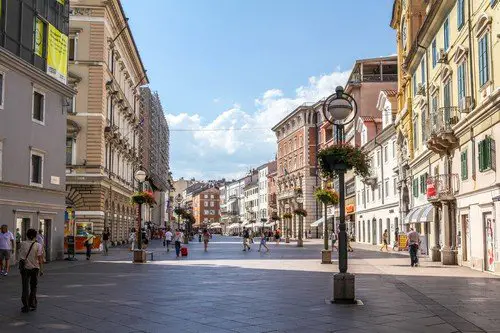
The Croatia Regional Travel Guide – The Coast and Split
The coast off of Southern Dalmatia is one of the most “dramatic” coastlines in Europe, as it boasts mountains that sweep down its coast and run towards a seaboard containing olive plantations and palm trees. It is very urbanized, especially compared to the rest of the Adriatic coast, and the Split creeps in both directions, from the shore to the Makarska Riviera in the south. But it is also home to several natural villages and harsh wilderness.
On this part of the coast, the Split is the center of which everything revolves around. This city is not only teeming with nightlife but also serves as the main ferry to the Adriatic. It also contains the ruins of the Roman Salona, the medieval stronghold of Klis, and the renaissance era town of Trogir.
Split also contains several infamous pebble beaches and fishing villages. Inland, you can visit the Cetina gorge or the Imotski lakes, known for their “weirdness”. If you visit Split, you can be sure that there will be several linked buses between towns, as well as the use of the ferry to explore further out.
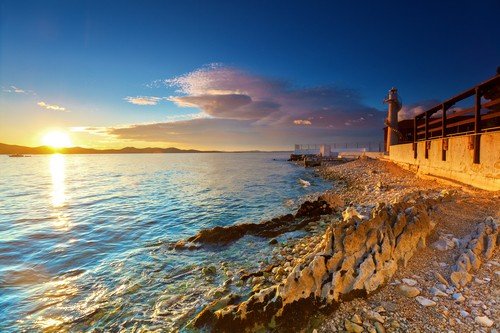
The Croatia Regional Travel Guide – Southern Dalmatia
Southern Dalmatia is a favorite of the Croatia Regional Travel Guide and is known for its mixing of Mediterranean and modern styles. Beyond a few basic resorts, their contemporary hotels, restaurants, marinas are held hand in hand with the more local, traditional culture of food, wine, and accommodation. The first impressions of this city are rather unique, as the first thing tourists see as they cross the Adriatic sea is the ancient ports that are surrounded by palm trees.
The island of Brac is generally the first stop, as it contains several well-known beaches as Supetar and Bol, as well as great places to
great places to go yachting at Solta. If you go south, you can visit Hvar Town, Hvar, which is famed for its beautiful stone architecture.
If you are an urban traveler, you will find plenty to see and do here–fashionable bars, gorgeous Gothic chapels, and palaces, offshore islets for sunbathing. Hvar Town is much different from the rest of the area, as it is a lot more hedonistic, while areas like Jelsa and Stari Grad are a lot more laidback and relaxed in their activities.
The island of Korcula Town is much the same, with its tourist activities focused more on beachcombing and urban tourism. If you go further out, to the island of Vis (which was just opened to tourists in 1989), which is somewhat known for being a former navy base.
If you want to visit lesser-known areas on the Adriatic, Hvar or Brac are the best destinations for you. Lastovo is also another great option for those who want a unique, out of the norm vacation. You can visit this small, relaxing village and then go straight back to the mainland and several islands–Korcula or Ston, for example–via the ferry service.
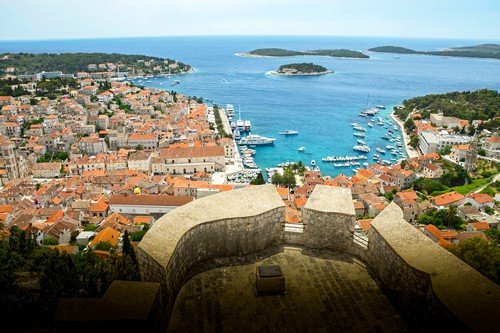
The Croatia Regional Travel Guide – Dubrovnik
This sea battered city is the most popular tourist destination in Croatia Regional Travel Guide particularly after the HBO series, Game of Thrones, shot there from 2011 to 2016. There are several tourist resorts that are available for use just outside the city, mainly in Zupa Dubrovacka and Cavtat. Visit the gardens that surround the city with oleanders, figs, oranges, lemons, and other greenery. Or take the bus and explore the surrounding islands–Sipan, Kolocep, Mljet, and Lopud–to sunbathe and explore.
While tourism has done wonders for the city, in putting it on the worldwide map, unfortunately, some of its success has done it ill. Many restaurants and tourist-oriented activities, museums, for example, have placed more focus on raising prices and making money rather than creating a uniquely Dubrovnikian experience for visitors.
Do not let this put you off of visiting, just be aware that there is a downside to visit hugely popular tourist destinations. Visit Dubrovnik any time you wish, although the best times are in the spring and summer. Hope to see you there soon!
Now that you have read the Croatia Regional Travel Guide, what’s next? Let’s learn more about a Croatia trip. Check out Ultimate Croatia Travel Guide
